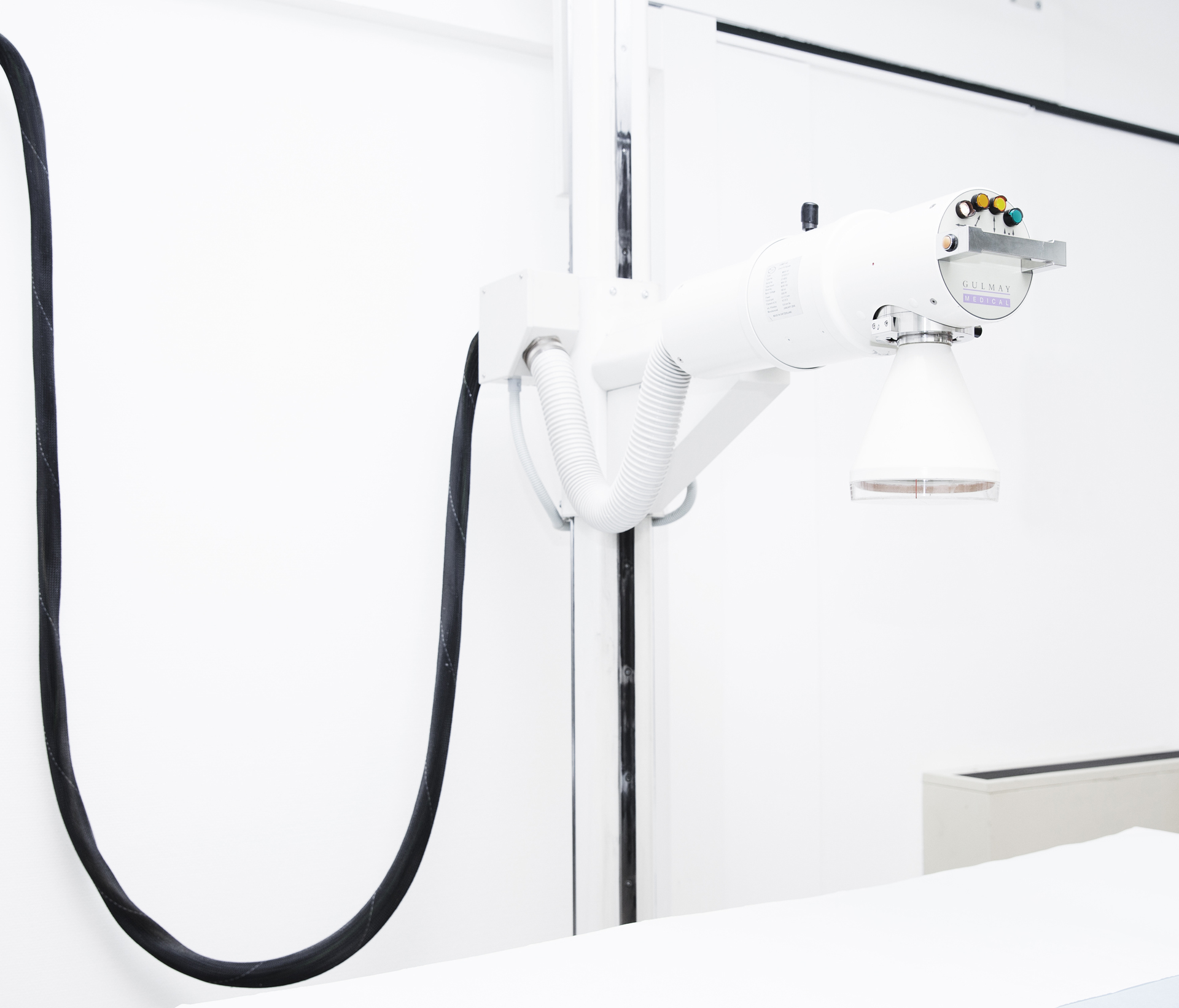
Digital radiography
Very high image quality, the option of editing the X-ray, a low radiation dose, rapid availability and convenient storage capability – digital radiography technology offers numerous advantages compared to conventional X-ray technology.
Digital radiography
General Information
More details on digital radiography
We have been familiar with conventional X-rays since 1895. They are used to evaluate the structures of the bones, as well as the lungs and the heart. Through the use of X-rays, tissues of varying densities can be examined. However, the new digital method makes it possible to generate digital images, which can then be edited. This provides a significant reduction of the radiation dose. Diagnosis is no longer carried out using X-ray film, but rather using special image-viewing consoles.
Frequent applications
- imaging of the skeleton
- imaging of the lungs
- functional images using an X-ray grid
- examination of the gastrointestinal tract (double-contrast examination)
- video examination of the oesophagus
- pyelography (imaging of the efferent urinary tract)
- intravenous phlebography (imaging of the venous system)
How is a digital X-ray taken?
A digital X-ray takes only fractions of a second. It is important not to move for a short period of time – and for X-rays of the lungs, you must hold your breath briefly.
What should I keep in mind for the examination?
Depending on the region of the body to be examined, you will be asked to remove your clothing and any jewellery. The digital X-ray usually takes only fractions of a second. During the procedure, you must remain still for a moment. For a pyelography or phlebography, you will be administered a non-ionic X-ray contrast medium. We therefore recommend that you don’t eat or drink anything in the last four hours before the examination. In addition, we require current kidney laboratory values. For all other digital X-rays, no particular preparation is necessary. Please take note of our contrast medium information sheets.
What do I need to take to the examination?
Current renal laboratory parameters (KREA) and thyroid laboratory parameters (TSH).
Is the examination painless?
Yes, the examination is completely painless.